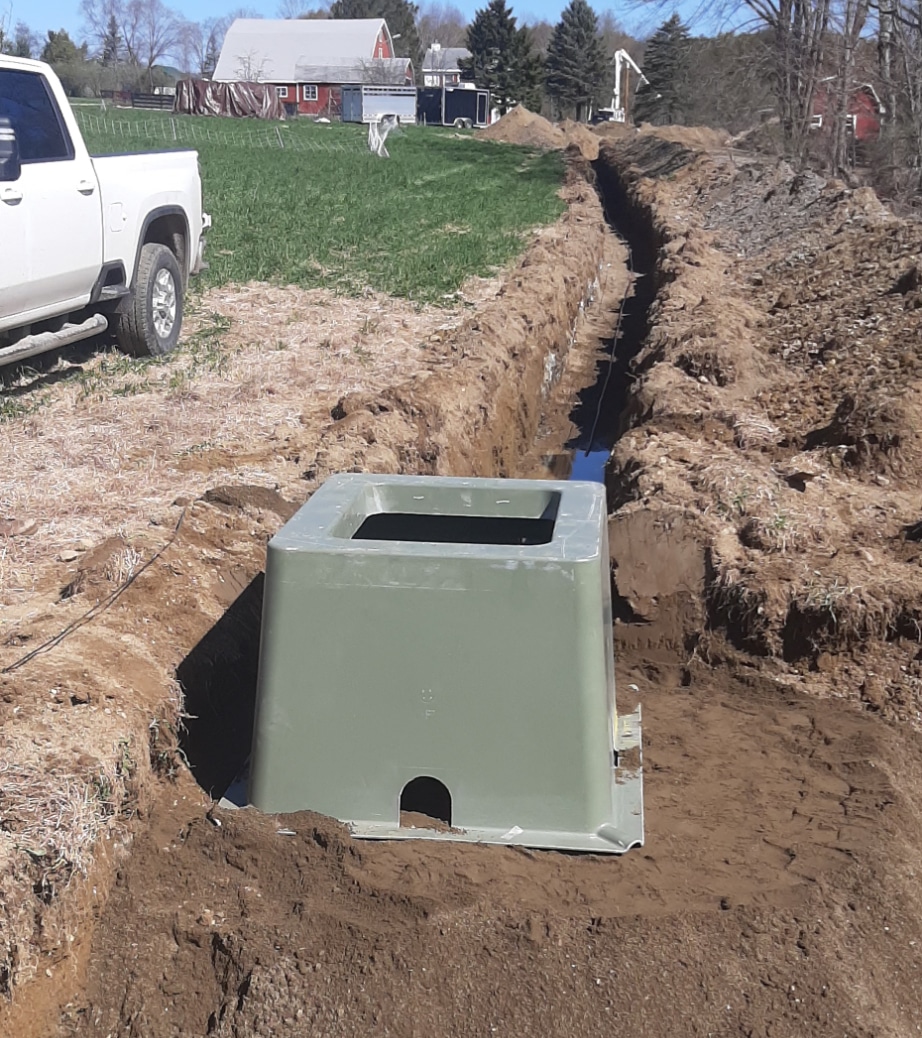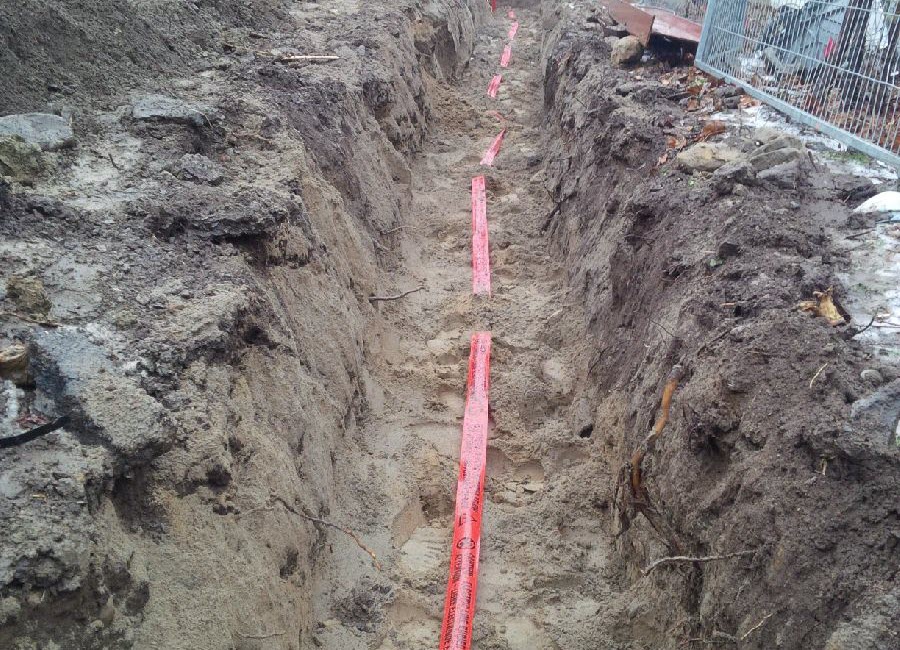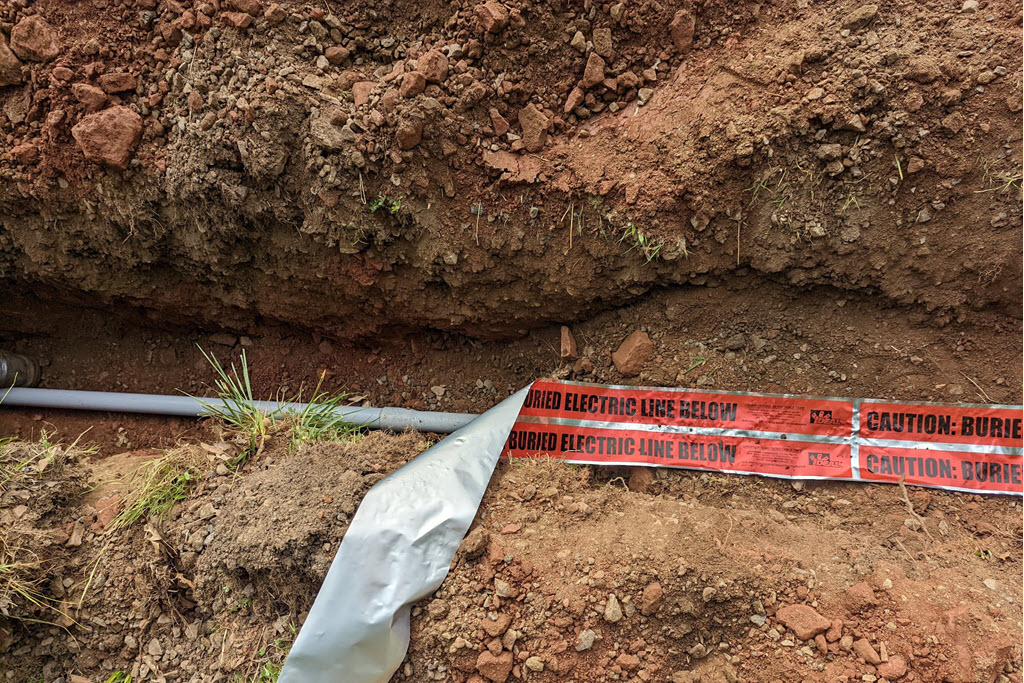Electric Line Servicesin Romeo MI
Service Electrical Lines Installed for Safe and Reliable Power
We Are Locally Owned & Operated For Over 37 Years
Contact Us Today!
We Serve Businesses In And Around The Following Cities:
About Electric Line Services
Introduction: The Power of Electricity for the Vibrant City of Romeo
At the heart of the burgeoning growth witnessed in the enchanting city of Romeo lies one under-acknowledged, yet vital component – electricity. With a steady stream of commercial properties springing up in varied corners of the city, an efficient and robust electric line network has become an industrial lifeline, ensuring operations run smoothly and sustainably. Designed to safely transmit electricity from the power source to end users, electric lines have become an integral part of our cities’ infrastructure. In particular, they hold immense significance for commercial properties, powering every crucial aspect from lighting, heating, and air conditioning to complex machinery and technological systems.
The Complete Guide to Electric Line for Commercial Properties
Understanding the know-how of electric lines and their installation is crucial for those involved in commercial property management. Whether a transport hub, office complex, retail outlet, or industrial facility, every commercial property necessitates a different electrical framework, each with its unique set of challenges. A sound knowledge base will enhance decision-making and allow one to oversee the efficient, safe, and cost-effective installation and maintenance of electric lines. We shall delve deep into the process, benefits and real-world applications of electric line in Romeo, an incredible city that stands as a testament to rapid industrialization coexisting harmoniously with remarkable historical charm.
The Process of Electrical Installation
Gaining a comprehensive understanding of how electricity is brought from the ground, processed, and finally delivered to commercial properties is crucial. Primarily, it begins at the power plant, where electricity is generated. This generated power is then transported through high voltage lines. On reaching the destination city, transformers lower the voltage so that it can be carried through the city’s network of electrical lines safely. However, before these lines can provide usable power to commercial buildings, ground electricity must be sufficiently harnessed and transformed to meet the specific demands of the property in question. It is the role of the electrical installation process to ensure the flow of power from the source to end use.
Why is a Robust Electric Line Essential?
The vitality of a robust electric line cannot be overstated. A well-designed and properly maintained line ensures reliable, unhindered supply of power, a fundamental requirement for any commercial property in the bustling city of Romeo. With a nod to the renowned expertise of D&J Contracting, a world-class provider of electric line services in Romeo, commercial businesses can benefit from a safe, efficient, and reliable electrical infrastructure. A robust electric line is optimal for reducing hazards, disruptions, and inefficiencies that can result from power outages or fluctuations.
Real-world Applications of Electric Lines in Romeo’s Commercial Properties
Romeo’s commercial landscape, vibrant with shopping complexes, office buildings and industrial facilities, offers an intriguing study in electricity application. Let’s consider a large retail store, teeming with modern amenities and electronic devices. From illuminating the location and powering security systems to managing electronic billing systems and inventory management equipment, there is an omnipresent requirement for a stable, reliable electric line. D&J Contracting, with its rich experience in designing and installing electric lines, can effectively cater to complex needs of commercial entities like these.
The Commercial Edge: Benefitting from Electric Line Services
Integrating robust electric lines into a property’s infrastructure promises several advantages for businesses in Romeo, transforming both efficiency and profitability. Electric lines ensure a reliable supply of power, thus minimizing disruptions and allowing businesses to offer seamless services. Furthermore, a well-designed and maintained electric line can significantly reduce electrical hazards, a critical aspect for commercial properties where safety is paramount. With D&J Contracting at the helm of installation and maintenance duties, businesses stand to gain from recognized expertise and assurance of high-standard service.
As we reflect on the profound role of electric lines in modern commercial properties, the need for professional guidance and expert services is clear. For businesses in Romeo, an efficient, safe, and reliable electric line is not just necessary; it is a strategic investment that can significantly boost their productivity and reputation. Beyond the apparent functionality, it promises value in terms of operational reliability, safety, and sustainability. With an experienced service provider like D&J Contracting, commercial properties are well-equipped to tackle modern electrical demands and contribute to Romeo’s vibrant growth story.
Electric Line Services Gallery


Call Us Today to receive your Free Quote for
Electric Line in Romeo
Serving: Romeo, Michigan

About Romeo, Michigan
A settlement here was originally occupied by the indigenous Chippewa (Ojibwe), an Algonquian-speaking people who were part of a large language family of tribes extending to the Atlantic Coast. Those tribes around the Great Lakes are thought to have migrated to this area by the 12th century.
The early European-American settlers in this area referred to the Chippewa settlement as “Indian Village”. In the 1820s and 1830s more migrant European-American families began to settle in the area, building homes and establishing businesses. They renamed the community “Hoxie’s Settlement”, after a man who opened an inn on Main Street. In 1839, Hoxie’s Settlement became incorporated and was renamed as the village of Romeo. The name was suggested by the wife of local merchant Nathaniel Taylor because it was “short, musical, classical and uncommon.” Romeo celebrated its 175th anniversary on March 9, 2013.
Romeo once served as a trading center for the timber industry, and had many mills processing lumber from the region. Many wealthy timber families resided there. Dozens of stately Victorian mansions survive. Romeo is distinct in the area for having a fairly robust, traditional downtown, which has never suffered a major fire. Because of this, some stores and restaurants downtown have features such as original tin ceilings from the Civil War. In the early 20th century, Romeo was the site of an early business devoted to the new automobile industry: the Detroit Auto Vehicle Company operated here from 1904 until 1908.
The village is in northwestern Macomb County, situated at the southeast corner of Bruce Township, with a portion extending south into Washington Township. Armada Township is adjacent to the east and Ray Township to the southeast. M-53 passes through the east side of the village, leading north 16 miles (26 km) to Imlay City and south 30 miles (48 km) to the eastern side of Detroit.
According to the United States Census Bureau, the village of Romeo has a total area of 2.05 square miles (5.31 km), of which 0.002 square miles (0.005 km), or 0.10%, are water. East Pond Creek crosses the easternmost part of the village, flowing east to the North Branch of the Clinton River, part of the Lake St. Clair watershed.
| Census | Pop. | Note | %± |
|---|---|---|---|
| 1850 | 330 | — | |
| 1880 | 1,629 | — | |
| 1890 | 1,637 | 0.5% | |
| 1900 | 1,580 | −3.5% | |
| 1910 | 1,787 | 13.1% | |
| 1920 | 2,102 | 17.6% | |
| 1930 | 2,283 | 8.6% | |
| 1940 | 2,627 | 15.1% | |
| 1950 | 2,985 | 13.6% | |
| 1960 | 3,327 | 11.5% | |
| 1970 | 4,012 | 20.6% | |
| 1980 | 3,509 | −12.5% | |
| 1990 | 3,520 | 0.3% | |
| 2000 | 3,721 | 5.7% | |
| 2010 | 3,596 | −3.4% | |
| 2020 | 3,767 | 4.8% | |
| U.S. Decennial Census | |||
As of the census of 2010, there were 3,596 people, 1,501 households, and 979 families residing in the village. The population density was 1,780.2 inhabitants per square mile (687.3/km). There were 1,659 housing units at an average density of 821.3 per square mile (317.1/km). The racial makeup of the village was 91.9% White, 3.8% African American, 0.2% Native American, 0.5% Asian, 1.1% from other races, and 2.6% from two or more races. Hispanic or Latino people of any race were 5.7% of the population.
There were 1,501 households, of which 32.2% had children under the age of 18 living with them, 46.2% were married couples living together, 14.9% had a female householder with no husband present, 4.1% had a male householder with no wife present, and 34.8% were non-families. 30.8% of all households were made up of individuals, and 13.6% had someone living alone who was 65 years of age or older. The average household size was 2.36 and the average family size was 2.96.
The median age in the village was 40.9 years. 23.5% of residents were under the age of 18; 7.7% were between the ages of 18 and 24; 24.1% were from 25 to 44; 29.4% were from 45 to 64; and 15.3% were 65 years of age or older. The gender makeup of the village was 46.4% male and 53.6% female.
As of the census of 2000, there were 3,721 people, 1,528 households, and 993 families residing in the village. The population density was 1,842.8 inhabitants per square mile (711.5/km). There were 1,605 housing units at an average density of 794.9 per square mile (306.9/km). The racial makeup of the village was 92.66% White, 4.35% African American, 0.16% Native American, 0.40% Asian, 0.11% Pacific Islander, 0.67% from other races, and 1.64% from two or more races. Hispanic or Latino people of any race were 2.74% of the population.
There were 1,528 households, out of which 33.3% had children under the age of 18 living with them, 48.2% were married couples living together, 13.5% had a female householder with no husband present, and 35.0% were non-families. 31.3% of all households were made up of individuals, and 13.2% had someone living alone who was 65 years of age or older. The average household size was 2.40 and the average family size was 3.04.
In the village, the population was spread out, with 26.1% under the age of 18, 8.2% from 18 to 24, 30.1% from 25 to 44, 21.4% from 45 to 64, and 14.2% who were 65 years of age or older. The median age was 36 years. For every 100 females, there were 87.2 males. For every 100 females age 18 and over, there were 82.5 males.
The median income for a household in the village was $48,015, and the median income for a family was $60,179. Males had a median income of $51,875 versus $27,696 for females. The per capita income for the village was $22,588. About 3.2% of families and 3.9% of the population were below the poverty line, including 6.5% of those under age 18 and 3.9% of those age 65 or over.
The government of the village of Romeo consists of elected and appointed officials. The elected officials include six council members, one president, treasurer and clerk. The appointed officials include the Chief of Police, Department of Public Works Director, and Village Administrator. Currently, the elected clerk also holds the appointed position of Village Administrator. The day-to-day operations of the village are handled by the Clerk/Administrator.
Since the turn of the 21st century, Romeo has worked to upgrade its infrastructure. It has improved the streetscape on Van Dyke Avenue, the main road through the village, and installed a new water tower. It had earlier established one of the few wastewater treatment plants in the region. While most of the metropolitan region receives water and sewage service from the City of Detroit, Romeo independently sustains its own supply of water and manages treatment of village sewage. This was especially valuable during the blackout that occurred throughout the entire northeastern United States on August 14, 2003. Romeo was one of the few areas in the Detroit metropolitan area to have clean running water. More recent infrastructure improvements include a complete renovation of the village water system, and replacement of all the sidewalks throughout the village.
Call Us Today to receive your Free Quote for
Electric Line in Romeo
Related Services in Romeo, Michigan
We Serve Businesses In The Following Zip Codes:
48007, 48015, 48021, 48026, 48035, 48036, 48038, 48042, 48043, 48044, 48045, 48046, 48047, 48048, 48050, 48051, 48066, 48071, 48080, 48081, 48082, 48083, 48084, 48085, 48088, 48089, 48090, 48091, 48092, 48093, 48098, 48099, 48225, 48230, 48236, 48310, 48311, 48312, 48313, 48314, 48315, 48316, 48317, 48318, 48397